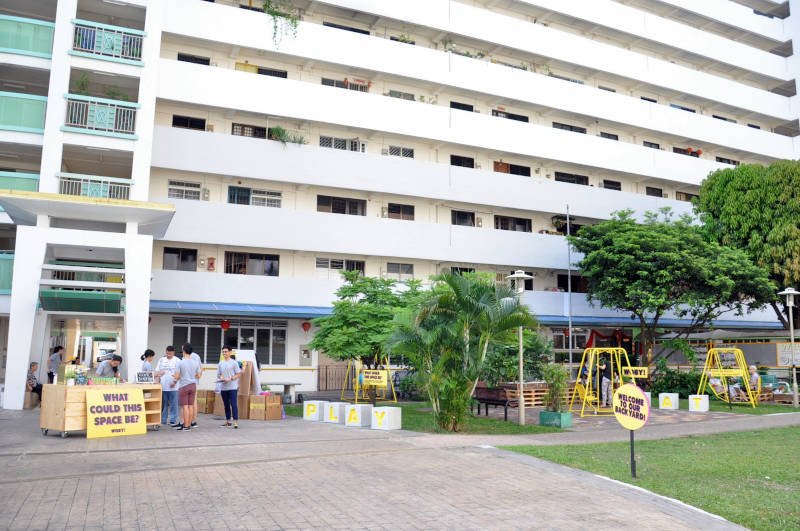Empowering the community is key to good placemaking, as when people take greater ownership of the spaces around them, they are better able to implement ideas that meet their needs and create more loveable places. Dr Chong Keng Hua, Associate Professor of Architecture and Sustainable Design at the Singapore University of Technology and Design, and Mr Larry Yeung, Executive Director of Participate in Design, shared their experiences involving various stakeholder groups in co-designing everyday spaces in Singapore.
Adapted from an edition of the People & Places Partnership webinar series presented by URA.
Stakeholder engagement and community participation are at the core of making great places. When designing public spaces, there might be a tendency to not consider or involve the everyday people who are using the space – but it is in fact their ideas that could produce the most meaningful outcomes. We should empower local communities by designing neighbourhoods with them and not just for them, through participatory design.
What participatory design involves
Connecting with the community
It is important to build relationships with residents and seek to understand their needs and sentiments. For example, it is helpful to attend Residents’ Committee (RC) meetings, engage face-to-face with local charities, small business owners and residents, or host visioning and engagement workshops that will help members of the community discover what they desire in a place. From these interactions, we get to gather suggestions, brainstorm ideas, and identify opportunities for positive changes.
Creating innovative and relevant solutions
Ideas previously surfaced can be refined using the collective knowledge discovered about a place and resources available. We can also develop solutions and test them out, as experimentation and observation of reactions to a prototype can provide insights on how the design can be further developed.
Delivering the most appropriate solutions
We should prepare for implementation of the design and celebrate its launch. However, it is also important to develop a good exit strategy which should include ways to sustain the community’s interest and involvement in the long term, even without the continued involvement of the project team.
Participatory design involves various groups in the community who may have different opinions and priorities. Hence, stepping in to facilitate conversations between community members, suggesting a compromise or addressing complaints and concerns are effective mediation methods to transform perspectives.

The Welcome to Our Backyard! project led by Participate in Design, which saw the project team and community come together to reimagine an under-utilised plot of land in Aljunied Crescent.
The approach to participatory design should be people-centric, instead of being too project-driven or too focused on meeting KPIs. Community engagement is better sustained when there is community empowerment. We should seek to complement the top-down approach to design with a bottom-up approach; localise designs in order to attract the community’s attention and service their needs, and adapt the design accordingly if things do not work out.
As far as possible, placemakers should adopt an open mind to receiving feedback and suggestions from the community even after the project has been executed. This could expand outreach, sustain engagements, and improve the project design. We should also consider ways to break down the barriers that may intimidate or prevent members of the community from engaging in the design process. Participatory design should be all-inclusive and can be a powerful platform for greater citizen participation. We can perhaps start small and focus on executing one good design and allowing the project to grow organically.
In the new normal, community building need not be disrupted by safe management measures necessitated by the pandemic. Community engagement can still take place via video conferencing platforms or mobile apps when physical restrictions on social gatherings prevent in-person interactions. Virtual engagement maintains open channels of communications that allow for the community and stakeholders to constantly update one another and share ideas. On the other hand, we might also want to consider that virtual engagements may exclude certain members of the community and ought to find alternative ways to engage these groups.
Dos and Don’ts in the Participatory Design ProcessDos:
Don’ts:
|
In conclusion
The approach of using simple installations, contextual elements, and creative programming through a participatory design process could empower individuals and interest groups, build social capital, and prompt a rethinking of urban spaces. Regardless of whether you are a planner, designer, resident or end user, everyone can play a part to participate more meaningfully in co-creating and co-activating loveable and great places in our communities.
Source: https://www.ura.gov.sg/Corporate/Resources/Ideas-and-Trends/Empowering-stakeholders



